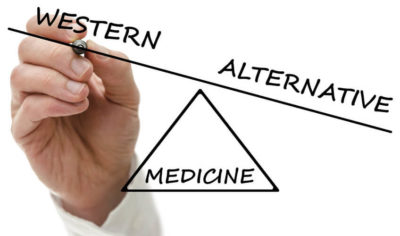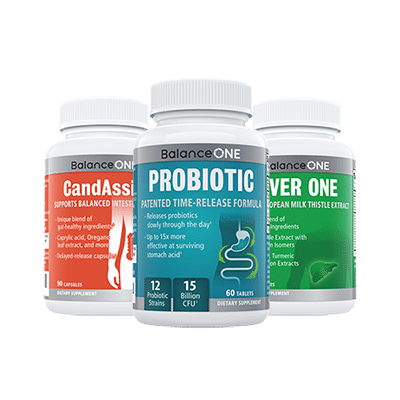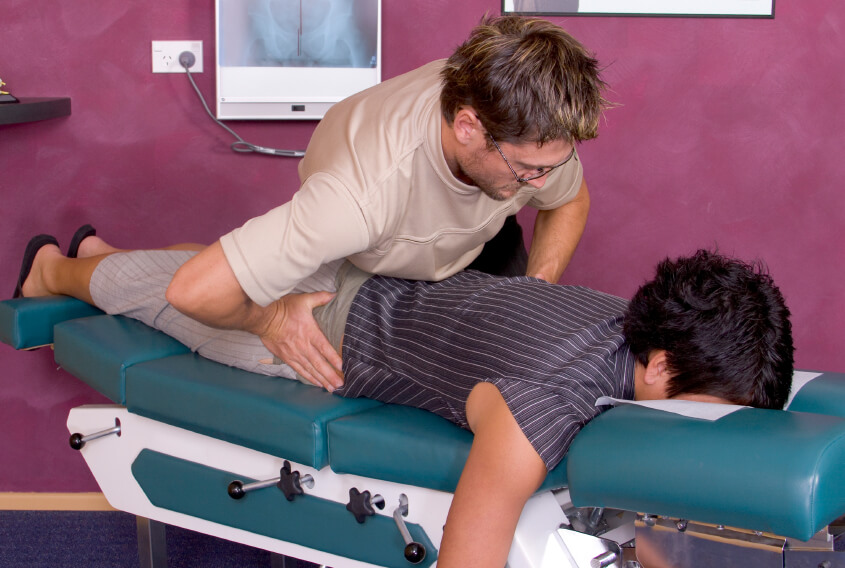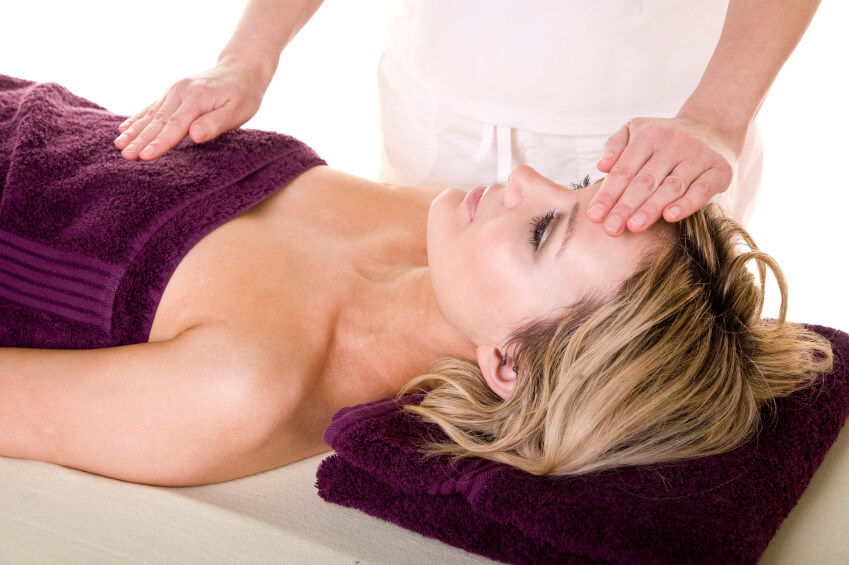An Introduction To Alternative Medicine

There are many alternative therapies that can be of use to Candida sufferers, including naturopathy, yoga, acupuncture, massage, and herbal remedies. In today’s article I am going to provide a basic introduction to the five categories of alternative medicine, along with some information on how alternative medicine tends to differ from Western, conventional medicine.
According to Merriam-Webster, alternative medicine is “any of various systems of healing or treating disease (as chiropractic, homeopathy, or faith healing) not included in the traditional medical curricula of the United States and Britain”. This definition highlights how the various types of medicine are viewed differently throughout the world. For example, chiropractic medicine – a form of diagnosis and treatment which involves musculoskeletal manipulation – is still primarily classed as alternative in the US, but not in other countries like Denmark or South Africa.
It is easy to be overwhelmed by the many treatments that can be considered alternative medicine, but this doesn’t have to be the case. In fact, many of these approaches share common qualities that transcend country, or region of origin and practice. Some of these qualities include: being patient-centered rather than physician-centered, relying more on nature than technology or technique, and emphasizing natural rather than pharmaceutical means of treatment.
Conventional (Western) medicine, as defined by US and UK practitioners, depends greatly on the physician being the most important person in the equation. After all, their expertise and judgment is derived from years of intense schooling and scholarly pursuits, and their conclusions – backed by mechanical science – are to be regarded as final. In fact, patients come to be defined by their symptoms, rather than being seen as a human being suffering from a condition.
In alternative medicine, the situation is exactly opposite. The practitioner looks first at the person, then at the ailment. Understanding the person first is seen as vital to not only understanding the problem, but also to determining a treatment approach. In this regard, alternative medicine varies greatly from the one-size-fits-all approach that is commonly encountered in conventional medicine.
In relying more on nature than technology or technique, alternative medicine practitioners recognize and attempt to employ the natural healing powers inherent in human beings. Conventional medicine prefers to treat and alleviate symptoms rather than address the root cause of an ailment. Alternative practices instead prefer to strengthen the body’s natural defenses, thereby addressing both the present ailment and any possible future occurrences. Results generally take longer to manifest, but tend to last longer as well.
Finally, alternative medicine places a greater emphasis on natural treatments over pharmaceutical ones. This is a logical extension of the first two common principles. Conventional medicine focuses heavily on the quick relief of symptoms, largely through chemical means. This is often at the risk of creating other, equally serious symptoms. Witness the anxiety medication that may also result in profuse sweating, uncontrollable diarrhea and/or death.
In contrast, alternative medicine would seek to determine and alleviate the root cause of the anxiety, without creating additional problems through hasty or inappropriate treatment. Another example is the speed with which conventional physicians prescribe lifelong medication for conditions like heart disease, rather than looking at the whole person and emphasizing early lifestyle changes, like a healthy low sugar diet and or a regular exercise routine, which could treat or even prevent the condition. Much of this stems from the traditional viewpoint that health is the absence of disease, rather than the overall condition of the individual.
When substances for symptom relief or cures are called for, alternative medicine turns to plants, herbs and minerals rather than chemicals. For example, a functional doctor or naturopath is likely to prescribe natural antifungals rather than prescription drugs.
Table Of Contents
The Differences Between Conventional, Alternative And Complementary Medicine
In simple terms, conventional medicine places its emphasis on physicians, science, and chemistry. Practitioners of alternative medicine place their emphasis on nature and the individual.
A typical conventional scenario might entail the following: 1) A person goes to see a physician after manifesting symptoms of a disease or condition. 2) A medical aide or nurse takes rudimentary measurements like temperature, blood pressure and weight and records these in a chart along with the symptoms the patient has and how long they have had them. 3) The physician studies the chart before examining the patient. 4) After performing their own cursory examination, the physician makes a determination or diagnosis based on the information gathered that day, much like combining factors into an equation. Based on the result, they then prescribe a course of treatment that frequently involves prescription of pharmaceuticals for symptom relief.
Contrast this with the definition of naturopathic medicine. According to Merriam-Webster, naturopathy is “a system of treatment of disease that avoids drugs and surgery and emphasizes the use of natural agents (as air, water, and herbs) and physical means (as tissue manipulation and electrotherapy)”. In reality, several different forms of alternative medicine can be classified under naturopathy. If a health provider recognizes the symptoms of Candida, for example, he or she might discuss lifestyle and dietary changes with the patient, including probiotic supplements and natural antifungals, along with creating tailored lists of foods to eat and foods to avoid.
While the differences between conventional and alternative medicine can be fundamental and profound, there is a third class that combines both of these disciplines. Complementary medicine can be seen as something like the best of both worlds. It involves the simultaneous employment of both conventional and alternative therapies in the treatment of patients. (1)
People may not realize it, but complementary medicine is used quite often. In 2008, the Centers for Disease Control and Prevention (CDC) released a study on complementary and alternative medicine (CAM) that found that more than 1/3 of adults have used some form of complementary medicine in the previous 12 months. Among the most frequently used forms were chiropractic care, yoga, deep breathing exercises and massage. (2)
This study also noted that patients who were concerned about the cost of conventional care used CAM more often than when cost of traditional care was not a concern. This has significant implications. For example, in a country like the United States where the cost of traditional medical care is increasingly out of reach for average citizens, CAM could provide a measure of relief that may not be otherwise available.
5 Types Of Alternative Medicine
Alternative medicine can be grouped into five categories. These are manipulative and body based methods, mind and body interventions, biologically based systems, energy therapies, and alternative medical systems. (3)
Manipulative and body based methods
These involve the movement and manipulation of certain parts of the body to regulate health or address ailments. Examples include osteopathy and chiropractic medicine. Although both of these disciplines are gaining acceptance in the greater traditional medical community, they are both still considered alternative.
Osteopathic medicine focuses on the relationship between function and structure of the body as well as its innate ability to heal itself. Chiropractic medicine focuses on nervous system and musculoskeletal system disorders and their effect on general health. Chiropractic doctors typically perform spinal manipulation to restore joint mobility.
Mind and body interventions
These interventions are intended to use mind capacity to affect bodily function. Examples include yoga, meditation, acupuncture, art therapy, and dance therapy among others. While most mind and body interventions are still considered alternative medicine, some have gained mainstream acceptance, for example cognitive behavioral therapy and patient support groups.
Common mind-body interventions like acupuncture, yoga, and meditation are among some of the oldest healing practices to be found.
Acupuncture is a discipline of Traditional Chinese Medicine, a wide group of medical practices that share a common origin in ancient China. It involves the stimulation of specific acupuncture points on the body, most commonly with needles, to relieve pain or promote physiological effects. This stimulation is most often conducted with needles, but may also use heat or pressure and massage. The theory behind acupuncture states that these very localized and specific stimulations help to correct an imbalanced flow of qi (or ‘life force’) through the body.
Yoga is a combination of physical poses and meditation, derived from various traditions found in Hinduism, Jainism, and Buddhism. It originated as a spiritual practice but has since evolved to become a form of physical exercise. A study of yoga practitioners in the United States found that they experienced both musculo–skeletal and mental health improvements from yoga.
Meditation by itself is focused attention to achieve relaxation and calmness. The history of meditation is closely linked to various religions around the world, with some of the first references being found in Hindu texts. Meditation is a broad term that encompasses a variety of practices. However, one of the most common forms is mantra meditation, which involves repeating a mantra (e.g. Om), closing the eyes, and adjusting one’s focus inwards.
Proper breathing is another key practice in mind-body medicine. Activities and techniques that promote proper breathing include Qi gong, Tai chi, Optimal Breathing®, classical voice training, walking, swimming, and sleeping properly.
Biologically based systems
These treatments use substances found in nature like herbs, minerals and vitamins. These are commonly supplied as dietary supplements.
The most popular dietary supplements consumed by American adults are fish oils and Omega 3 supplements. These supplements are used to maintain cardiovascular health and to treat or prevent a host of other ailments.
The use of probiotics is also a biologically based treatment. Probiotics involve the introduction of beneficial live bacterial to the gastrointestinal tract, either through supplements or by the addition of live cultures through foods like yogurt.
Energy therapies
These treatments involve the manipulation of energy fields. There are two types – veritable (measurable) or putative (yet to be measured). Example of energy therapies are Reiki and Qi Gong.
Reiki has origins in early 20th century Japan. Practitioners enable self-healing and equilibrium through the transfer of universal energy via their palms. There are two systems of Reiki – Traditional and Western. Although there are several nuances between the two, the most simple explanation of the differences between the two systems is that traditional Reiki depends on intuitive hand placements while western Reiki uses set hand patterns.
Qi Gong is a form of traditional Chinese medicine that dates back over 2,500 years. It involves a combination of breathing exercises, gentle movements and meditation. Qi Gong exercises, Qi Gong massage and external Qi Gong are used to balance the energy meridians in the body. From a medical standpoint, Qi Gong focuses on self- healing and prevention. Qi Gong is sometimes confused with Tai Chi. Tai Chi practitioners can often be seen in the early morning in public places like parks, going systematically through a fluid set of movements. These movements can look like a combination of dance and martial arts. Tai Chi is actually a “whole body, whole mind” form of Qi Gong. In health respects, Tai Chi is used to return the body to a state uncorrupted by disease, stress or pollution. Although Western medicine still feels that more research needs to be done to prove the health claims, areas in which studies have shown promise include issues of balance and strength and osteoarthritis.
Alternative medical systems
These are complete systems that have developed independently from traditional western medicine. The most commonly encountered of these include naturopathy, homeopathy, and Ayurvedic medicine.
As previously mentioned, naturopathy avoids surgery and drugs and employs lifestyle advice, nutritional and herbal medicine, remedial massage and homeopathy. Homeopathy is an alternative medical system in and of itself. The practice of naturopathy has its roots in the 19th century European Natural Cure movement. In the United States, Dr. John Franklin Gray in New York City was the first practitioner in 1828, with the first schools for naturopathy opening two years later.
Homeopathy is based on the principle of “treating like with like.” It is a system of medicine where highly diluted substances that cause an ailment are given to patients in order to stimulate the body’s natural immune response. The practice began in 1796 with Samuel Hahnemann, in response to the drastic medical practices of his era, including bloodletting. After waning in popularity, it is enjoying a renewed interest from the public. In the 2007 CDC study, nearly 4 million American adults reported using homeopathic remedies in the previous 12 months. Homeopathic remedies are regulated by the Food and Drug Administration (FDA) as drugs, however the agency does not evaluate them for safety or effectiveness. Homeopathy is a very controversial discipline, with detractors wondering how preparations that are so diluted as to contain minimal active ingredients can stimulate an immune response.
On the other side of the globe, Indian culture has employed Ayurvedic medicine, also called simply Ayurveda, since at least 5000 BC. Although it started as an oral tradition, it came to be based on three sacred texts. Ayurveda takes a holistic approach to patients, considering their mental and physical existence and personality. It emphasizes exercise, yoga, diet and meditation to support healthy metabolism, digestion and excretion. The ultimate goal is to attain physical, mental and spiritual equilibrium with nature. It is estimated that over 80% of people in India today use some sort of alternative medicine, including Ayurveda.
Conclusion
Alternative medicine is frequently a matter of perspective. What is considered conventional medicine is really based on US and UK medical curricula and practices. Other countries and regions have practiced different systems of healing, some going back thousands of years. To these practitioners and patients, their methods are not alternative at all, but rather the norm. While some people practice strictly Western methods, many individuals in the world practice these alternative forms exclusively. Recently, a study by the CDC has shown that many people actually practice a combination of the two.
References & Further Reading
(1) http://nccam.nih.gov/health/whatiscam#term
(2) http://nccam.nih.gov/news/camstats/2007/camsurvey_fs1.htm

3-Month Candida Elimination Kit Start Your 3-month Candida Cleanse
This Candida Kit contains all the supplements recommended on the Candida Diet:
- LIVER ONE to process and remove the toxins created by Candida.
- CANDASSIST to inhibit and weaken the Candida colonies in your gut.
- PROBIOTIC to replace the Candida yeast with probiotic bacteria.
Plus... the CANDIDA DIET RECIPE BOOK with 50+ low-sugar recipes






I’ve been wanting to look a little bit more into alternative medicine for a while, and I think that being able to read about it in your article was really informative! I’m glad that you talked about homeopathy as an alternative medical system, and how it is almost all by itself. I think that being able to try these different alternative medicine procedures to treat any ailments I may have would be worth a try, and maybe we can find something good for me that works better than traditional methods!